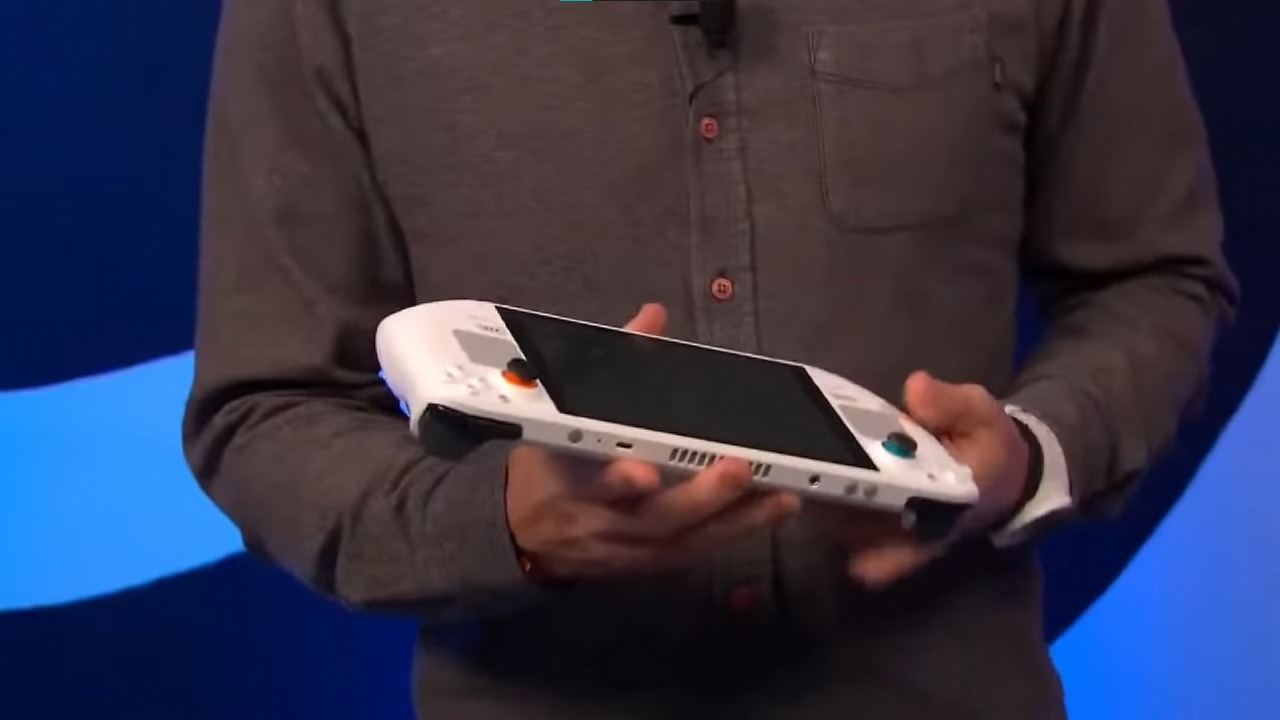White Steam Deck and Risk of Throttling - Valve Reveals New Info
During Friday's Steam Deck Development Live Stream, we were able to see a white Steam Deck. Will it go on sale soon? We also learned that the portable PC from Valve may perform worse at high temperatures.

The Steam Deck Development Live Stream took place on Friday. As the name of the show suggests, Valve presented new information about the Steam Deck... and showed off a white version of the device (at 3:38:34 of this video), styled to resemble the machinery from Portal. However, if you are wondering whether such a variation can be ordered, I warn you that no - at least not yet. What you see in the picture below is only a prototype. However, Valve is considering different color versions of the device so it is possible that the white Steam Deck will go on sale one day.
During the Steam Deck Development Live Stream we also learned more about the device that's expected to hit the market in February next year. The most important seems to be that the heart of the Steam Deck will be an AMD processor called Aerith SoC (yes, associations with the character from Final Fantasy VII are correct). It is supposed to contain four Zen2 cores clocked between 2.4 and 3.5 GHz. These numbers may not be very impressive, but Valve argues that the key is clock stability, not maximum performance. The company took a similar approach when it chose the AMD RDNA2 integrated GPU, with eight computing units and clock speeds ranging from 1 to 1.6 GHz.
Interestingly, Steam Deck will not artificially limit console's computing power - Valve does, however, expect that appropriate features (such as frame-rate limits) will be introduced by game developers. If this does not happen, the company may decide to implement such solutions in the future. This will be important, as the device is expected to offer the same performance when docked as it does when used in mobile mode for long periods of time - and limiting fps to 30 instead of 60 could extend battery life.
In addition, Steam Deck may experience throttling, i.e. slower performance at high outdoor temperatures (e.g. in summer), but the data transfer speed is supposed to suffer first, and performance in games only second. In order to optimize the download, Valve is to offer developers the opportunity to share texture packs with lower resolutions. This will not only save internal memory, but also enable us to download selected games faster.
More for You:
- Steam Deck Launch Delayed
- Half-Life 2 With New Features and Fixes for „Perennial” Bugs; Valve Refreshes Game for Steam Deck
- Inside the Steam Deck - Valve Showed the Console's Guts
We also learned that the cheapest model of the device - with 64 GB of eMMC memory - will be quite a bit slower than more expensive versions of hardware, based on NVMe modules with 512 and 1024 GB. Valve's tests were said to show differences of 12.5% in game loading times and 25% in system loading times. However, Steam Deck's internal storage will be expandable with microSD cards.
Thanks to the integrated USB3 Gen2/DisplayPort 1.4 DSC, the device will also be compatible with up to two 4K monitors simultaneously. Steam Deck, however, will not enable us to play with VR goggles or use 5G or LTE networks. In addition, the device's interface is expected to replace the Big Picture mode known from the PC version of Steam.
1

Author: Hubert Sledziewski
Has been writing professionally since 2016. He joined Gamepressure.com five years later - although he has known the service since he had access to the internet - to combine his love for words and games. Deals mainly with news and journalism. A sociologist by education, a gamer by passion. He started his gaming adventure at the age of four - with a Pegasus. Currently, prefers PC and demanding RPGs, but does not shy away from consoles or other genres. When he's not playing or writing, he enjoys reading, watching series (less often movies) and Premier League matches, listening to heavy music, and also walking the dog. Almost uncritically loves the work of Stephen King. Does not abandon plans to follow in his footsteps. However, he keeps his first "literary achievements" locked away deep in a drawer.
Latest News
- End of remote work and 60 hours a week. Demo of Naughty Dog's new game was born amid a crunch atmosphere
- She's the new Lara Croft, but she still lives in fear. Trauma after Perfect Dark changed the actress' approach to the industry
- „A lot has become lost in translation.” Swen Vincke suggests that the scandal surrounding Divinity is a big misunderstanding
- Stuck in development limbo for years, ARK 2 is now planned for 2028
- Few people know about it, but it's an RPG mixing Dark Souls and NieR that has received excellent reviews on Steam, and its first DLC will be released soon


